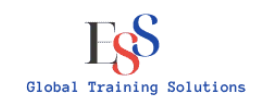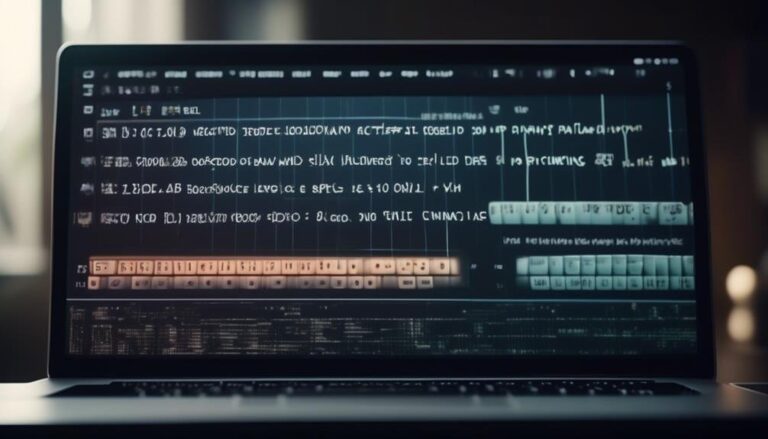Online Courses for Learning R Programming: Data Analysis and More
Embark on a journey into the world of data analysis and programming with online courses tailored to help you master R programming.
As you navigate through the intricacies of R, you’ll unravel the power of data manipulation, statistical modeling, and visualization.
But it doesn’t stop there. These courses offer a gateway to understanding advanced topics, practical applications, and techniques that will elevate your data analysis skills to the next level.
Whether you’re a beginner or looking to enhance your expertise, these online courses hold the key to unlocking the full potential of R programming for data analysis and beyond. For a more immersive learning experience, consider enrolling in a coding bootcamp Singapore to further develop your skills.
Key Takeaways
- R programming is a widely-used language for statistical computing and graphics, making it a valuable skill in the data analysis field.
- Online courses provide a flexible and convenient way to learn R programming, with hands-on exercises and real-world projects for practical learning.
- R programming offers a wide range of data analysis techniques, including data visualization and statistical analysis methods.
- Mastering advanced visualization methods and machine learning techniques in R can enhance data analysis skills and open up various career opportunities in data science and analytics.
Understanding the Basics of R Programming
To grasp the fundamentals of R programming, familiarize yourself with its syntax and data structures.
The syntax of R is similar to other programming languages, but it has its own unique characteristics. Understanding the basic functions and syntax is crucial for writing efficient and effective R code.
The language provides a wide range of functions for data manipulation, statistical modeling, and visualization. Learning the basic syntax, such as variable assignment, data types, and control structures, is essential for getting started with R programming.
Additionally, gaining familiarity with basic functions like mean(), median(), and summary() will lay a strong foundation for data analysis in R. These functions are commonly used for data exploration and descriptive statistics.
Exploring Data Analysis Techniques
Now it’s time to explore data analysis techniques in R.
You’ll learn about various data visualization techniques and statistical analysis methods.
These tools will help you gain valuable insights from your data and make informed decisions.
Data Visualization Techniques
Data visualization techniques in R programming offer a powerful means to analyze and interpret data effectively. By using interactive plotting and visual storytelling techniques, you can create compelling visualizations that aid in understanding complex data sets. Here’s a comparison of different visualization techniques:
| Technique | Description |
|---|---|
| Scatter Plots | Display the relationship between two numerical variables |
| Bar Charts | Compare categorical data |
| Line Charts | Show trends over time |
| Histograms | Illustrate the distribution of numerical data |
| Heatmaps | Visualize patterns in large datasets |
These techniques provide a diverse set of options for visualizing data, allowing you to choose the most suitable method for conveying your findings effectively.
Statistical Analysis Methods
Exploring statistical analysis methods in R programming builds upon the foundation of data visualization techniques, providing further tools for extracting valuable insights from your datasets.
In R, regression analysis allows you to model relationships between variables, enabling prediction and understanding of complex data patterns.
Hypothesis testing, on the other hand, helps you assess the plausibility of a hypothesis by analyzing sample data. This method allows you to draw inferences about a population based on a sample, providing a crucial tool for decision-making and scientific research.
Additionally, R offers a wide range of statistical functions and packages for conducting various types of analyses, empowering you to delve deep into your data and derive meaningful conclusions.
Advanced Topics in R Programming
What are the most challenging and intricate concepts in R programming that you should explore to deepen your understanding and proficiency?
Advanced visualization methods and machine learning techniques are two crucial areas to delve into.
Advanced visualization methods in R, such as ggplot2 and Plotly, allow for the creation of complex and interactive visualizations, enabling you to effectively communicate insights from your data. By mastering these techniques, you can enhance the visual appeal and depth of your data analysis.
Furthermore, delving into machine learning techniques in R opens up a world of possibilities for predictive modeling, clustering, and pattern recognition. Understanding how to implement algorithms like decision trees, random forests, and support vector machines in R can significantly expand your data analysis capabilities.
Practical Applications of R in Data Analysis
To expand your proficiency in R programming, it’s essential to understand its practical applications in data analysis. This includes utilizing advanced visualization methods and machine learning techniques to effectively communicate insights and extract valuable information from datasets.
Advanced Visualization Methods: R offers a wide range of packages such as ggplot2 and plotly, allowing you to create intricate visualizations that reveal complex patterns and trends in data. For instance, you can use these tools to produce interactive plots for exploratory data analysis or to generate publication-quality graphics for presenting your findings.
Machine Learning Techniques: With R, you can implement various machine learning algorithms, such as linear regression, decision trees, and clustering. These techniques allow you to build predictive models and uncover hidden patterns in data. For example, you can utilize these techniques to develop a model for predicting customer churn in a real-world business scenario.
Real-World Examples: R is extensively used in diverse fields such as finance, healthcare, and marketing. It is employed for tasks like fraud detection, disease diagnosis, and customer segmentation. By leveraging R for data analysis, you can gain insights and make data-driven decisions that have practical implications in these domains.
R Programming for Statistical Modeling
Statistical modeling in R programming involves applying mathematical and computational techniques to analyze and interpret data, allowing you to uncover meaningful relationships and patterns within your datasets.
In the context of statistical inference, R provides a comprehensive set of tools for hypothesis testing, confidence intervals, and regression analysis. With R’s extensive libraries and packages, you can conduct various statistical tests to make inferences about population parameters based on sample data.
Furthermore, R is a powerful platform for predictive modeling. Its wide array of machine learning algorithms, such as decision trees, random forests, and support vector machines, enables you to build robust predictive models.
Through these techniques, you can develop models that forecast future trends, classify data into distinct categories, or estimate numerical values.
Mastering R for Data Visualization
As you progress to mastering R for data visualization, you can leverage the statistical insights gained from modeling to create impactful visual representations of your data.
When mastering R for data visualization, you can begin customizing plots to suit your specific needs. This includes adjusting colors, adding annotations, and modifying axes to effectively convey your message.
Additionally, you can explore the creation of interactive graphs, allowing your audience to interact with the data and gain deeper insights. Interactive graphs enable you to incorporate tooltips, zooming, and filtering options, enhancing the user experience and understanding of the data.
Moreover, mastering R for data visualization involves learning to effectively use various visualization packages such as ggplot2, plotly, and rbokeh, each offering unique capabilities to create compelling visualizations.
With these skills, you’ll be able to create visually appealing and informative graphs and charts, making your data more accessible and engaging for your audience.
Conclusion
You’ve delved into the world of R programming, mastering data analysis and visualization. Now, you’re equipped with the skills to excel in statistical modeling and practical applications.
The online courses have expanded your knowledge and understanding, providing you with the tools to tackle real-world data challenges.
With your newfound expertise, you’re ready to conquer the data analysis landscape and make a significant impact in your field.







